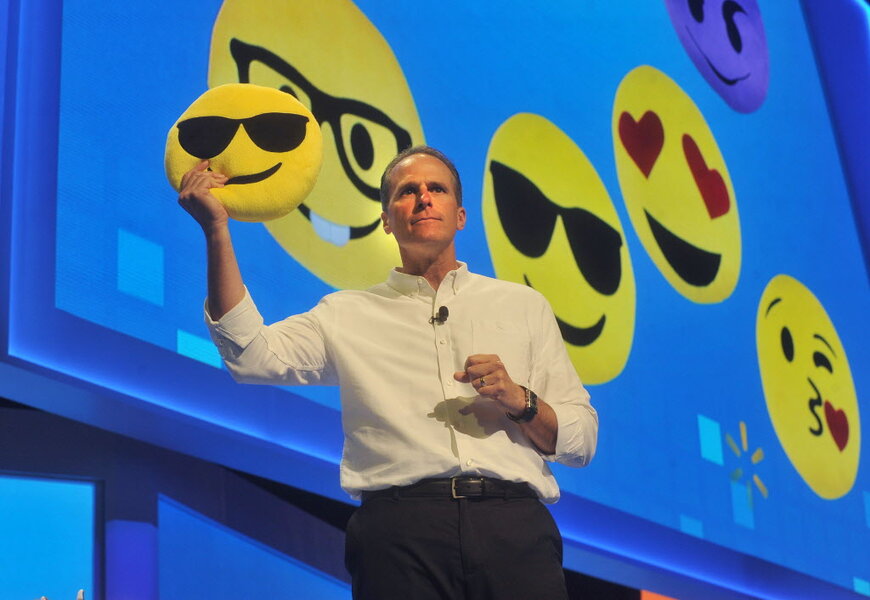Do happy employees mean bigger profits? Walmart thinks so.
Loading...
Walmart isn't exactly known as a great place to work. But the world's largest retailer has been making moves to change that over the past year or so, with the hope of improving both its reputation and its bottom line.
According to the company, it's working. Over the past two years, Walmart has spent more than $1 billion to raise its employees’ wages and improve their working conditions, including opening new training centers to teach them important retail skills. The company opened its first training academy in February of this year and plans to open 200 more by the second quarter of 2017.
That investment, Walmart says, is yielding returns. This week, Walmart released results of an internal study to employees that showed customer satisfaction has risen for 79 straight weeks. Walmart financial performance has also improved. Sales at the discount retailer have risen for the seventh straight quarter.
“It’s the tiny, noticeable things that should be in our DNA,” Walmart US COO Judith McKenna said at a meeting of Walmart associates this week.
Walmart has long faced criticism in the past for low pay and subpar working conditions. Since 2013, a labor group called Our Walmart has protested outside the retailer's stores on Black Friday, demanding for higher wages and things like better scheduling practices and the right to unionize. In February 2016, Walmart raised its wages so that the average full-time employee makes approximately $13 per hour. The average part-time employee at the company now makes approximately $10 an hour.
The February increase was the second of two scheduled pay raises for Walmart employees; in April 2015, Walmart raised its minimum hourly pay to $9. The federal minimum wage is $7.25 per hour.
Several studies have demonstrated that when companies invest in their employees, it’s good both for their people and for the bottom line. A 2012 study conducted by economists at Stanford found that employee happiness and productivity rises when workers are allowed to maintain a flexible schedule. In 2014, research conducted by economists at the University of Warwick found that productivity increases by as much as 12 percent when workers are happy.
In addition to Walmart, other retailers have provided fuel to the argument that there is a correlation between happy workers and higher profits. Costco promotes many of its staff from within, emphasizing training and retaining a highly skilled retail staff. In March, the wholesale membership chain raised its minimum employee pay to approximately $13 per hour. The company’s profits have grown by 39 percent since 2009, and in 2015 Costco ranked alongside Nordstrom, the luxury department store, as one of the top brands in terms of customer satisfaction.
Competition for workers in the retail industry is high; overall turnover is about 65 percent for store workers, and replacing them is costly. But as a result of its labor practices, turnover at Costco for employees who choose to stay more than a year is less than 5.5 percent.
Walmart’s move to raise its employees’ wages were not only a response to criticism and protests, they also helped the discount retailer stay competitive against rivals like Target and Aldi, a discount grocer. A 2015 analysis of more than 100 retail chains and Walmart competitors, conducted by the Hay Group, shows that in order for Walmart competitors to match the firm’s $10 an hour pay raise for its part-time employees, those retail chains would have to collectively shell out more than $4 billion.
Despite the improvements, not all Walmart workers are satisfied. On Friday, a group of OUR Walmart protesters will demonstrate outside the company's annual shareholder meeting in Bentonville, Ark., capping a series of protests this week over inventory, store organization, and customer service problems due to understaffing and low retention of employees.
“We are in the aisles and at the cash registers every day witnessing customers unable to fill their shopping list because shelves aren’t stocked,” California Walmart employee Martha Sellers said in a press statement released by OUR Walmart on Wednesday. “Walmart is America’s largest private employer. We’re challenging it to be a great store for both employees and customers. Fair pay, starting at $15 an hour, and full-time schedules are investments that will translate directly to a better customer experience.”








